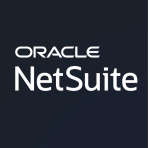What is our primary use case?
We are a consultancy and we use this solution to provide services for our customers.
Over time, I have used JD Edwards for a variety of use cases. One of the very recent ones was converting from strong discrete costing to actual costing in a manufacturing setting. Some other examples are capital asset management and AP automation.
What is most valuable?
The most valuable feature is the user experience, where you can create your own queries, it sends you alerts, and it's very flexible.
The interface is very user-friendly. As long as you apply logic, it is easy to do the technical stuff. It is structured well so you don't always have to depend on technical people to do things like create reports.
It has the latest features in terms of embedded mobility and orchestration.
The integration with other products is easy to do.
Customization is easy to do, as long as you stick to their rules. It can be customized in a cloud-based deployment, as well.
There are tools in place that allow users to update the system themselves, without any technical support.
Support for developers is easy because they have their own toolset. They have options for using SQL, RPG, and different languages, depending on the hardware that you're using.
What needs improvement?
I would like to see the HR features enhanced with respect to localization for South Africa and other countries. They have perhaps 12 localizations but I think that for countries like South Africa, where the payroll system is unique, they should start investing more heavily.
I would like to see more training documentation, or alternatively, training that you can do without having to go offsite. Unfortunately, when training with Oracle, it is quite expensive. Also, the instructors come from India and the dialect is very difficult for people from South Africa to understand. Consequently, a lot of people feel that it's a waste. It could have been very good but they didn't understand what the trainer was saying. This is a big thing that I would like to see more with. The documentation that they have is good, but it's very expensive so people would rather not buy it.
For how long have I used the solution?
I have been working with JD Edwards EnterpriseOne for about 20 years, since 2000. Prior to that, I had been using JD Edwards World since 1991.
What do I think about the stability of the solution?
EnterpriseOne is used on a daily basis and the actual solution is very stable, whether deployed on-premises in on the cloud. Stability will depend on who did the setup, as with any system. When you try to take short cuts then you end up short anyway.
What do I think about the scalability of the solution?
It is absolutely easy to scale this product. We have about ten users in the company.
Which solution did I use previously and why did I switch?
I have a little bit of experience with similar products from several vendors, including Microsoft Dynamics and SAP. I have found that the user experience is much nicer within JD Edwards, compared to anything else that I have seen. It is not rigid and allows you to change or customize things within the framework that is provided.
NetSuite is a little bit cheaper than JD Edwards, although they are catering more to smaller enterprises rather than medium-sized organizations. They compromise certain functionality or applications. A lot of the applications out there are good for startups, but the moment that you start diversifying, you have to start looking either at add-ons or re-implementing different ERPs. The trend lately is not to just replace everything. Rather, have additional or complementary products that suit your needs
With JD Edwards, it is a fully integrated system so you can run just certain modules, but it's optimized if you use the full ERP system. For example, if you need procurement, work orders, and financials, then there is a benefit to moving everything into one system.
How was the initial setup?
Provided you understand the framework, it is quite easy to install and set up. After this, it is easy to maintain and manage. The length of time required for deployment depends on whether you have a proper blueprint because all of the processes are embedded. With all of the blueprints available, for a new installation, it can take between six and nine months.
The deployment will also depend on the state of your data. It may already be clean, or it maybe needs to be pre-processed before migrating. I would say that every situation is unique. You can do the majority of the setup offsite, just by getting all of the business processes in advance. Then, when you start UAT and other testing, you go onsite and go live. It's not that complex. I came from a financial background and moved into the IT sphere, which was not that difficult to do.
The maintenance is done with our in-house team. Normally, you have one person for every module. However, on the technical side, you only need one person because everything has been automated and is orchestrated to do a lot of the work for you. It just pops out some reports and alerts as it monitors the system for you.
What about the implementation team?
In some cases, we used assistance from the vendor during the implementation, although we have also deployed it ourselves. These days, a lot of the migration, upgrades, or updates are done internally.
When it comes to supporting our customers, we are able to do functionality support because we've got in-house business analysts who do the actual applications.
What's my experience with pricing, setup cost, and licensing?
The licensing is for mid-market businesses, where it is cheaper than Oracle Cloud, EBS, or SAP. It is very much on part with Dynamics, although Dynamics can become quite pricey in the end.
The cost of licensing depends on the modules that are being used. It varies because some of them are user-based, whereas others are employee-based.
There is a lite license and a normal license. People who use it full time, like in procurement or for someone doing purchase orders, use a normal license. On the other hand, when you get people that only do approvals, for instance, then they can get a lite license and it's a little bit cheaper.
What other advice do I have?
Most of my experience is with on-premises deployments, although I have also worked in an environment where we hosted it on the cloud. If you have a cloud-based deployment then it's managed and maintained by the vendor, although you can still have your own customizations that are unique to the business.
The vendor continuously improves this product, basing their changes according to the feedback provided by customers. At this point in time, it is difficult to asks for specific features because they're very compatible with any other system in the market.
They are very strong in the manufacturing, construction, and engineering industries.
My advice for anybody who is implementing JD Edwards is to make sure that all of your processes are stabilized and standardized. Follow the best practices. Make sure that the processes are not coming from somebody who had good ideas 60 years ago but in reality, are no longer effective.
The best thing to do is make sure that the data is clean and you have the blueprints for the business processes according to best practices.
I would rate this solution a ten out of ten.
Which deployment model are you using for this solution?
On-premises
Disclosure: My company has a business relationship with this vendor other than being a customer. Partner












